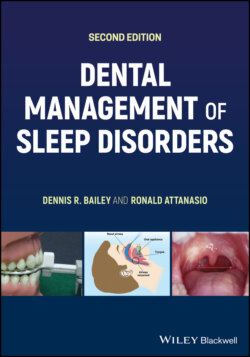Читать книгу Dental Management of Sleep Disorders - Ronald Attanasio - Страница 56
3 Pathophysiology of Sleep‐Related Breathing Disorders Conceptual Overview
ОглавлениеThe origin and cause of sleep‐related breathing disorders (SRBDs) are ongoing areas of study and interest, as well as the many contributing factors. The pathophysiology of SRBD is multifactorial, involving the anatomy, the function of the airway physiologically and other contributing factors such as the control of respiration neurologically, age, sex, weight and other sleep disorders. In addition, SRBDs are often times progressive. This may begin simply as chronic mouth breathing, especially during sleep, and progress to snoring and then to obstructive sleep apnea (OSA) [1]. In addition, there may be neurogenic changes that can impact the sensory and motor activity of the upper airway related to vibration, inflammation, and even hypoxia [2]. There may also be a developmental aspect to the evolution of SRBD in the human. This involves the loss of the eppiglottic‐soft palatal lock‐up that in other primates prevents the tongue from collapsing into the airway during sleep. This has been attributed to the acquisition of speech, associated with the descent of the larynx, termed the great leap forward [3] (Figure 3.1).
Insomnia also needs to be considered and may be associated with painful conditions, psychological issues such as anxiety or depression, and may be residual to adequately managed SRBD. This association was first reported in 1973 [4]. It has been reported that about 50% of patients presented with both the SRBD and insomnia, and it was termed sleep breathing disorder plus [5] also referred to as complex insomnia [6].
